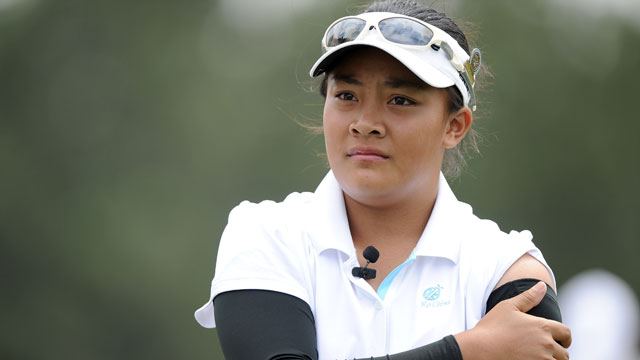NEWS
Two generations with two different points of view at U.S. Women’s Open

One is a 13-year-old, getting ready for eighth grade, spending the start of her U.S. Women’s Open week wondering if she should be asking these players for autographs or playing beside them.
The other is 55, a winner of six majors and all but retired -- yet still with enough game to grind through qualifying and earn a spot in what she says will be her last pro tournament.
Mariel Galdiano and Betsy King both have tee times at the Broadmoor on Thursday, even though in the golf world they are playing from completely different sets of tees.
Such is life at the U.S. Women's Open, where the world's best try to enhance their resumes while competing against each other -- along with dozens of amateurs, qualifiers and other underdogs with big dreams.
"I've been telling her lately, put your head down, look at people's feet, just focus," said Galdiano's father, Roger, who also serves as her coach and caddie. "I want her to think of it as practice."
The reality that it is anything but practice comes shining through at every turn this week the for Honolulu native, who picked up her first golf club about seven years ago, won her first tournament a few years after that and played well enough in qualifying last month, a few days before her 13th birthday, to earn one of 156 spots this week on the East Course.
On Wednesday, she played a practice round with another Hawaiian, Michelle Wie -- "Very friendly," she said -- took part in a kids clinic on the driving range with Annika Sorenstam and passed Natalie Gulbis in the tunnel leading to the course.
"She looked down at my shoes and said, 'Nice shoes,'" Galdiano said, glancing down at her white and aqua golf sneakers. "I said, 'Thank you.' Pretty cool."
Standing at right around 5 feet and with an average driving distance of 220 yards, Galdiano is not the next Michelle Wie, whose formative years have been defined by mishaps on the men's tour and a long list of lessons learned about what happens when you go for too much, too soon.
"The way we're going to do it is, we're just going to go through our routine," Galdiano's dad said. "I'm not going to sign her up to play against the men and stuff. We're just going to try to see how the progression goes. Depending on how good she gets, we'll see from there. High school and college -- that will be a good experience."
While Galdiano's future is ahead of her, King concedes her slow withdrawal from the spotlight came for a reason most elite athletes are loathe to acknowledge.
"To be honest, if I could play well enough to play, I'd still be playing," she said. "Ninety-nine percent of the people that I know who retired -- that's why they retired. They just didn't play well enough to keep playing."
King saw the beginning of the end coming in the early 2000s, when the two-time LPGA Tour money leader started having more and more trouble simply making the cut. When her father was diagnosed with terminal cancer in 2005, then her mother with Alzheimer's a year later, she realized it was time to focus elsewhere. Her folks passed away, and King started doing charity work in Africa. She still played the game, but not in any real competitive sense.
"I've looked at other players that have tried to come back and I said, 'I'll never do that,'" she said.
Golf, however, does not let go easily. Neither does the drive of a champion. King has won 34 LPGA Tour events, is the first woman to pass the $5 million and $6 million marks in prize money and has been a member of the World Golf Hall of Fame since 1995.
Earlier this year, she decided she wanted to play in a Legends event and thought the U.S. Open qualifier the week before would be a good tuneup for that.
"I really surprised myself," she said. "I played OK. I played well enough. I'm very happy to be here. Obviously the golf course is a little bit harder than where I qualified."
The Broadmoor will be the first U.S. Women's Open course to play longer than 7,000 yards. The USGA, as always, prides itself on setting up tough courses, with long rough and narrow fairways. The greens on this course, situated near the mountains on the southwest side of Colorado Springs (Locals will tell you: All putts run away from the Will Rogers Monument on Cheyenne Mountain), are difficult even when the resort players tee it up. It figures the course will yield a winning score of around par -- more common for the USGA than the 16-under 268 Rory McIlroy posted to win the men's Open at Congressional last month.
In short, it's the sort of event that figures to play to the 20- or 30-something crowd -- Yani Tseng, Paula Creamer, Stacy Lewis -- more than an eighth grader or a Hall of Famer in her 50s.
"My goal this week is to feel comfortable standing over the ball," Galdiano said. "One shot at a time works best for me. When I think about score too much, it throws me off."
And for King -- well, she says making the cut at the U.S. Open would be a great way to say goodbye.
Some swing thoughts, though, die hard.
"Well, if I win, I can always change my mind," she said. "That would be a real miracle, believe me."
